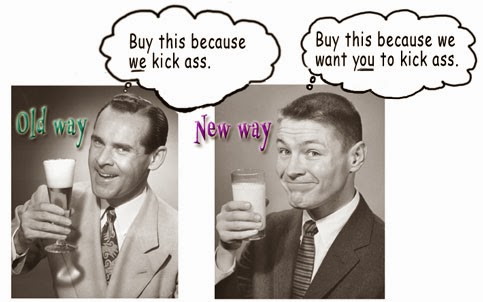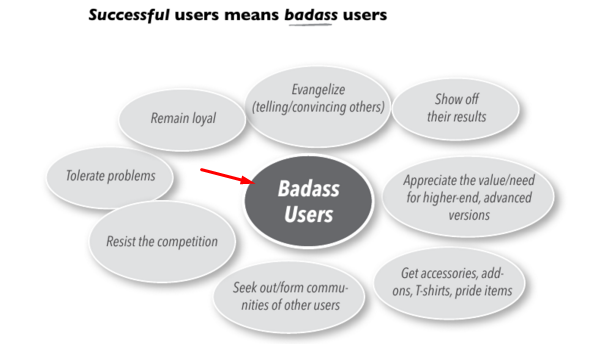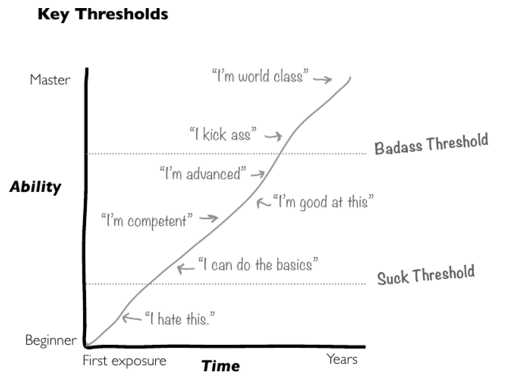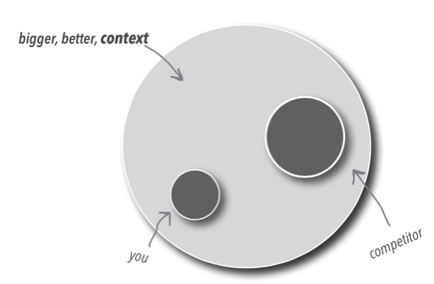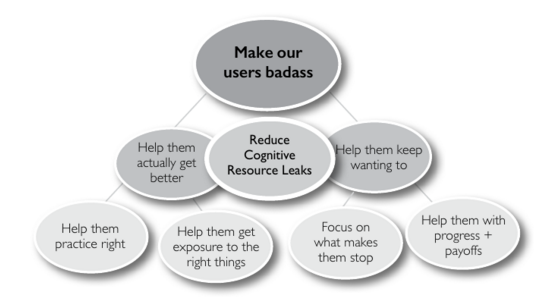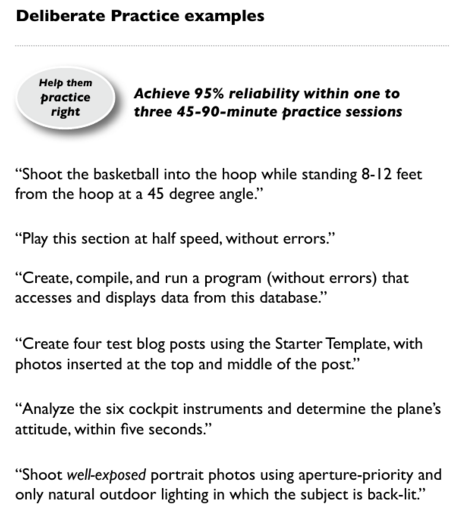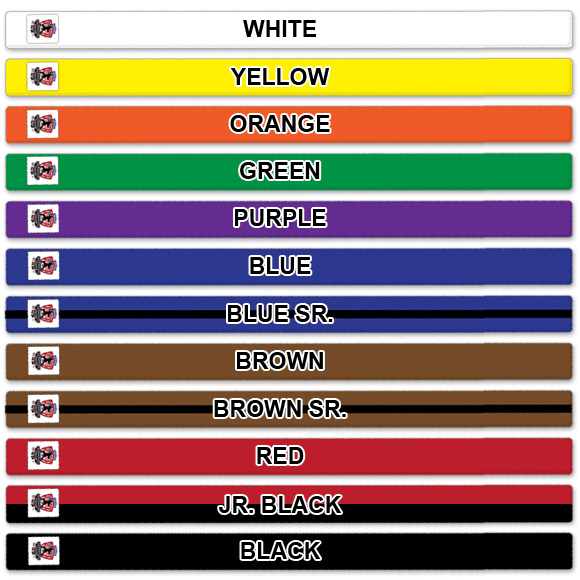Courtesy of Test-n-Tell
Do you know what the secret to enduring business success is?
Nope, it isn’t in building awesome products. Nor does it come from building an awesome company. Or an awesome brand for that matter.
Give up?
Well, the answer according to User Experience (UX) guru Kathy Sierra is this:
“Make your users/customers feel awesome” – Kathy Sierra
Upturning age-old ideas about successful marketing, Sierra’s book Badass: Making Users Awesome offers a radical idea that your company should focus on helping your customers (or users) become badass users. Unlike mere customers, badass users are more likely to evangelize your products and services to their friends.
Benefits of Badass Users
Here’s what a badass user look like (excerpted from the book):
To help your users become badass, your entire organisation – product development, marketing, user training, customer service, etc – needs to focus on building your users ability such that they can go beyond the “Suck Threshold” to gain kick ass competence.
This is illustrated by the chart below:
Only when they are able to do so would your users experience the world in higher resolution, allowing them to savour its richness and fullness in greater depth and intensity.
Expand to a Compelling Context
Now how should you go about doing so?
The first thing you need to do is zoom out to a “bigger, compelling, and motivating” context for your products or services. This means going beyond just selling a tool (eg a software for Marketing Automation) to expanding to a bigger context (eg Performance Marketing Tools).
When you do so, you’re focused not just on making a better product, but on making a better user in that broader context. This is elegantly illustrated below:
So how can you move your users or customers to the Badass Zone?
Three Steps to Making Users Badass
To make your users badass, Sierra proposed three key strategies in her book:
- Help your users to become better
- Motivate them to do so
- Reduce cognitive resource leaks
This can be represented by the diagram below:
Let us go through each of these steps in turn.
#1 How to Help Your Users Get Better
Drawing from the science of learning and expertise, Sierra proposes that you should first create a definition of badass for your context and your tool. This can be represented as follows:
Given [describe a representative task] an expert [describe superior performance for the task] more reliably.
To help your users become expert, you should institute a programme of deliberate practice into your product or service. Quoting from James Clear’s blog, it can be understood as follows:
Deliberate practice is when you work on a skill that requires 1 to 3 practice sessions to master. If it takes longer than that, then you are working on something that is too complex. Once you master this tiny behavior, you can move on to practicing the next small task that will take 1 to 3 sessions to master. Repeat this process for 10,000 hours. That is deliberate practice.
Here’s how Kathy Sierra presented what deliberate practice is from her book, with different examples.
You’ll also need to subject your users to a learning environment of perceptual exposure.
Citing the 1994 research by Phillip Kellman from UCLA and Mary Kaiser from NASA, Sierra narrated how non-pilots could outscore seasoned pilots on instrument reading tests after less than two hours of perceptual exposure and less than five minutes of actual instruction in a cockpit. These non-pilots were exposed to numerous trials in a perceptual training session after a quick orientation of the instruments.
With the right degrees of exposure to positive examples, your users could also improve their perceptual knowledge and their brains could pick up patterns on a subconscious level.
#2 Help Your User Stay On The Learning Path
Next, you need to help your users to continually use your product in their road to badassery. This should be done in two ways:
a) Anticipate and Compensate for User Road Blocks
Be mindful of the blocks that may stop your user from progressing. This range from frustration in using your product, lack of feedback, to feeling stupid.
To do so, you should implement an anticipate and compensate strategy:
- Predict the most likely obstacles your users may face and the questions they might ask.
- Thereafter, compensate for their inability to show and tell you what they’re experiencing.
To find out what these blocks are, you could visit online discussion forums focused on your industry. Or just ask your users in person or online.
To compensate for their frustrations, be honest in preparing them for the road ahead in as many places as you can – user manuals, marketing, support website, community groups, blogs, videos, testimonials, case studies, etc.
b) Provide Performance Path Map
Akin to the martial arts belt system in Tae Kwon Do or Karate, the performance path map shows the stages of progress which your users have attained along their path to mastery.
To create a path, do the following:
- Make a list of key skills ordered from beginner to expert
- Slice them into groups to make ranks/levels
- To motivate them, the earlier, lower levels should be achievable in far less time and effort than the later, advanced levels
- Each new level could take roughly double the time and effort of previous levels
c) Create a Motivating Payoff Loop
To keep your users intrinsically motivated, you’ll need them to gain deeper and richer experiences (high resolution) as they gain proficiency and achieve flow (ie be in their element). This can be accomplished by designing a way for them to create something meaningful in 30 minutes within their compelling context (eg “take photos”).
Beyond the initial 30 minutes, you do want your user to move on to the next motivating “superpower” with exposure-to-good-examples, followed by a payoff. In other words, to follow what Sierra calls a motivating payoff loop, ie this:
Image from Badass: Making Users Awesome
#3 Reduce User’s Cognitive Resource Leaks
Last, but not least, you’ll need to design your product or service to reduce your users need to expend cognitive resources. This is kind of like the bank of intellectual or mental energy which they have each day.
a) Simplify User Skill Acquisition
A leak occurs when your users’ mental resources are expended on the numerous tiny details involved in using your product or service. An example include setting up your product, fiddling with indecipherable dials, and needing to rely on your user manual to perform a simple step.
To reduce their cognitive leaks, you should design the following into your product:
- Make the right action the most natural and obvious action
- Use clear and intuitive labels
- Reduce the need for them to choose by giving defaults
- Help them automate skill acquisition
- Give them practice hacks (eg a notebook or a tracking app)
- Help solve top-of-mind problems by giving a consistent and repeating reminder
b) Help Your Users’ Brains to Stay Focused
You should also help them to reduce the need for your users to use willpower by helping their brains to stay focused. To bypass their brains’ spam filter, you need to inject something which their brains care about, ie:
- Scary or threatening things
- Human or animal faces, especially those with strong emotion
- Young and helpless things
- Things which generate emotions
- Odd, surprising and unexpected things
This can be done through creating visceral examples (eg a picture or story that is vivid), convincing their brains through context, or eliminating all the details that need to get past your users’ brain.
The key here is this: Less IS More. Focus on Just-In-Time rather than Just-In-Case.
A Mind Blowing Business Strategy
As you’d imagine, helping your users to become badass isn’t going to be easy.
For a start, you’ll need to think of your user as a learner and your business as a teacher. You’ll need to apply the latest techniques involved in andragogy (adult education), and to design ways for your users to gain competence and excellence in the smoothest and most rewarding way possible.
However, I am confident that once you can achieve this breakthrough, you’ll be able to transform not just your user experience but your business too.
Badass: Making Users Awesome is an amazing book which you need to buy (or borrow) and read repeatedly. Its radical ideas will change how you think about your business.
What I’ve done is merely to summarise some of its main points – there are lots more great insights in the book. Go get your copy today!

